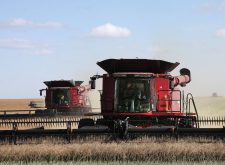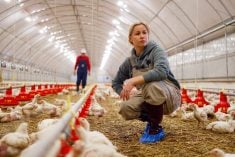A green project at the Prairie Agricultural Machinery Institute (PAMI) near Lanigan, Sask., turning solid manure into energy through their solid state anaerobic digester.
The digester uses organic waste, such as manure, livestock feed or grass clippings, to produce gases.
PAMI was contracted by the Saskatchewan Stock Growers Association, which received $51,000 from Agriculture Canada to fund the project.
During the process, micro-organisms break down organic matter in an oxygen-free environment and collects the gas.
The gas can be converted to heat and electricity or upgraded to natural gas.
Read Also

B.C. ostriches culled, CFIA confirms
Ostriches on an embattled Edgewood, B.C. farm have been culled after a prolonged legal battle, the Canadian Food Inspection Agency has confirmed.
“There is an expansion line in place to convert gas to electricity and heat, and to ideally heat the (digester) system itself,” said Joy Agnew, project manager for PAMI.
As well, the leftover organic material, digestate, can be used as fertilizer on land.
“Right now, it’s being heated through a diesel system but we want to use the biogas to actually heat the system itself. The digestate is just in the composition trials right now to see what nutrient differences there are between fresh manure, composted manure and composted digestate.”
Energy from the gas created by the digester could be used to power ethanol operations such as the one located at the Pound-Maker feedlot located next door to PAMI.
“When you get it (manure) in a raw state, there’s quite a bit of variability in this product so you can’t get precise nutrient management with raw manure,” said Pound-Maker president Brad Wildeman. “So this would provide an opportunity to maximize those nutrients that are there.”
Many liquid digesters exist in Europe and some in North America but this is the first time solid material is being processed.














